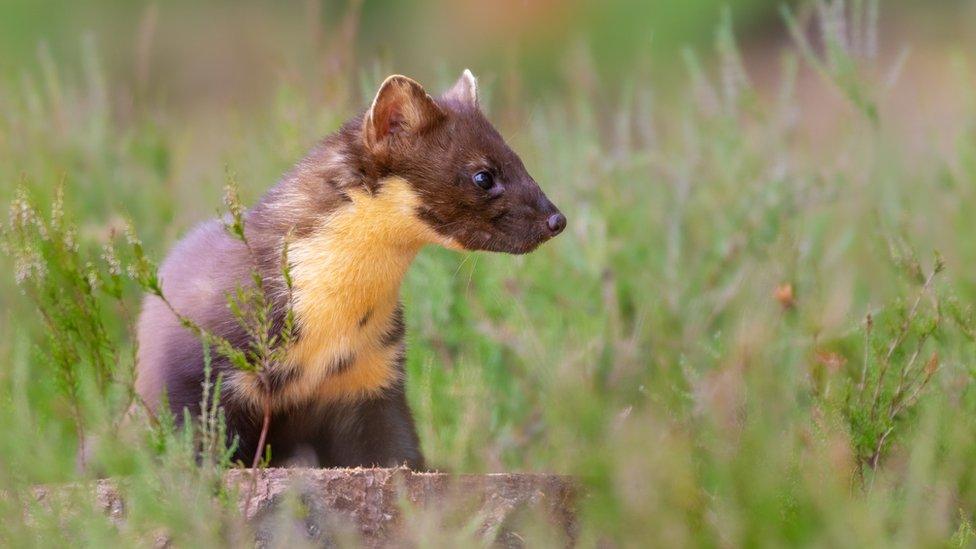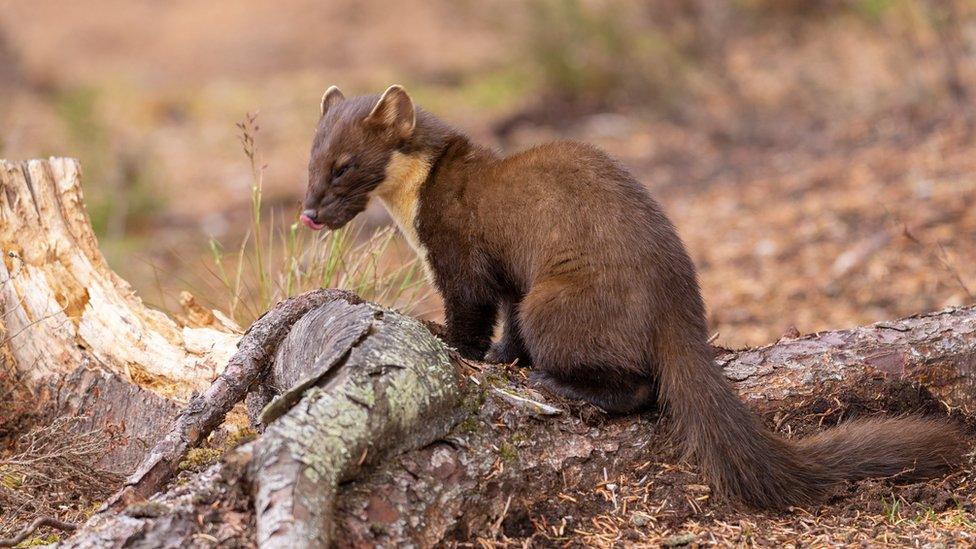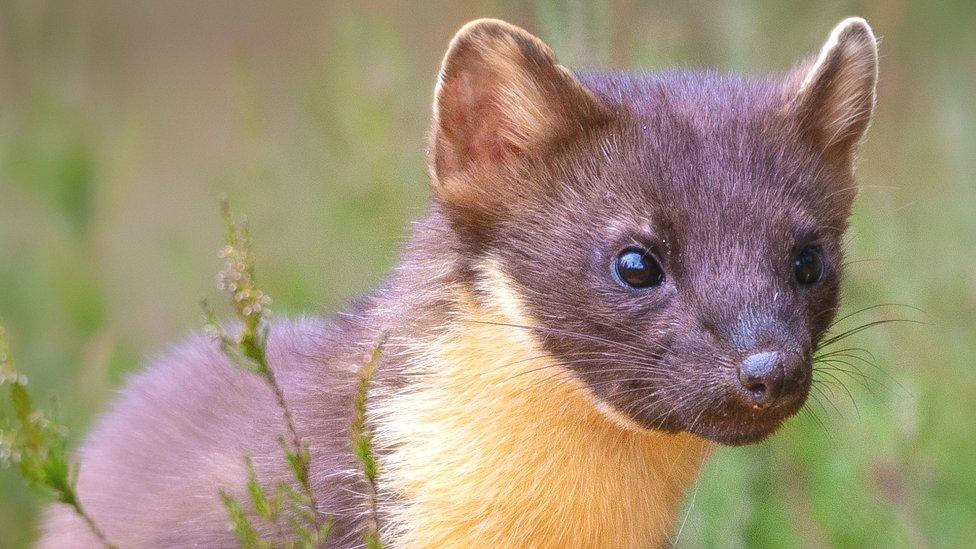Cameras capture Galloway pine marten population growth
- Published
The pine marten has been helped by a range of measures in Galloway Forest Park
A rise in numbers of pine martens is being caught on camera in the Galloway Forest Park.
Trials of thermal imaging technology are capturing the occupancy rates of more than 100 den boxes installed to help boost numbers.
It allows remote monitoring of the pine marten and their offspring - called kits - without disturbing them.
Wildlife cameras can then be fitted at occupied den boxes in order to film and study any subsequent movements.
Figures show that following the introduction of the boxes there has been an increase in their usage since monitoring began in 2016.
The number of positive checks has risen as follows:
2016 - 4
2017 - 3
2018 - 9
2019 - 7
2020 - 8
2021 - 7
2022 - 16
2023 - 14
The thermal imaging trials have been taking place over the past year.
They have resulted in footage being captured on wildlife cameras fitted by the Dumfries and Galloway Pine Marten Group showing kits being moved at about four weeks old by their mother.
They were taken one at a time to a denning site closer to ground level so they were less likely to injure themselves as they became more mobile.

Numbers have risen steadily in the Galloway Forest Park thanks to a range of measures
Kim Kirkbride, environment forester at Forestry and Land Scotland (FLS), said: "Using the non-invasive thermal imaging camera allows us to remotely monitor how many den boxes are in use, without disturbing the inhabitants.
"We can establish whether populations of pine marten are increasing and if they're breeding successfully.
"Pine martens are an important factor in grey squirrel control."
She said other control measures were still required but the den boxes had a part to play in helping red squirrels to survive.
Pine marten are known to naturally predate on squirrels and prefer greys to red squirrels as greys appear to be slower moving and less wary and therefore easier to catch.
That, in turn, helps red squirrels which are under threat from rising numbers of greys which can carry squirrel pox which is fatal for reds.
FLS hopes to use the same technology at other sites across Scotland to help monitor pine marten at both a local and national level.
Ms Kirkbride said the introduction of den boxes had given the pine martens "suitable locations to breed" while work continued to create an "optimum habitat" for them.

Thermal cameras are being used to check on pine marten usage of den boxes
"The use of thermal imaging to check the pine marten boxes has dramatically reduced the amount of disturbance caused to the pine marten at a particularly sensitive time of the year when they are breeding," she explained.
"Whilst the thermal imaging does not positively identify what is using the boxes it provides us with an indication if the box is being used.
"We can then erect wildlife cameras to monitor the activity and hopefully get footage of pine marten using the boxes and, more excitingly, confirming breeding."
She said a previous survey in 2014 had estimated 18 pine marten were present in one of the woodland blocks managed by FLS and following the erection of den boxes that had risen to 32 by 2017.
"Whilst these figures cannot specifically point to the increase of den boxes allowing for expansion you can quite clearly see an increase is occurring within Galloway Forest Park," she said.
Footage from this year has captured kits being moved which bodes well for the future - not just for pine marten but also for the protection of red squirrels in an area where they are constantly under threat.
- Published31 October 2022
